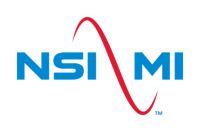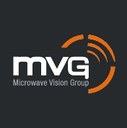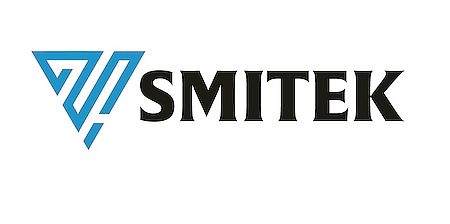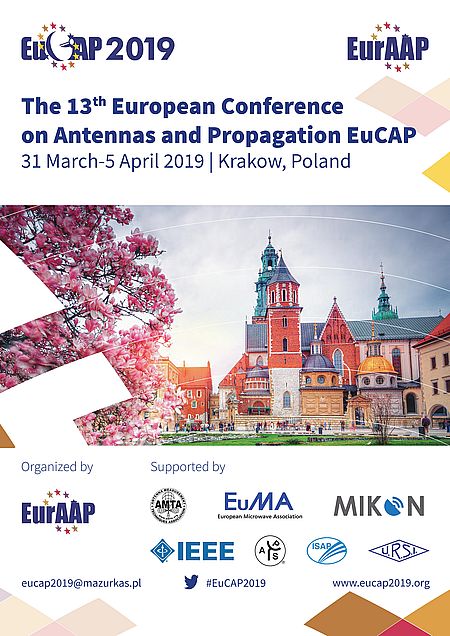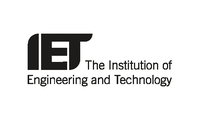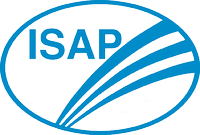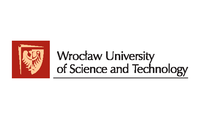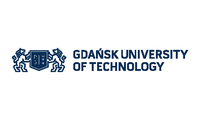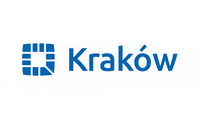A New Look at the Problem of Antenna Design on Complex Platforms by using Characteristic Modes, Eigenmodes and Characteristic Basis Functions
Biography
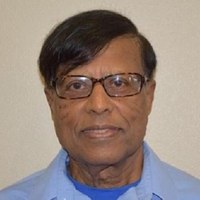
Raj Mittra is a Professor in the Department of Electrical Engineering & Computer Science department of the University of Central Florida in Orlando, FL., where he is the Director of the Electromagnetic Communication Laboratory. Prior to joining the University of Central Florida, he worked at Penn State as a Professor in the Electrical and Computer Engineering from 1996 through June, 2015. He was a Professor in the Electrical and Computer Engineering at the University of Illinois in Urbana Champaign from 1957 through 1996, when he moved to the Penn State University. Currently, he also holds the position of Hi-Ci Professor at King Abdulaziz University in Saudi Arabia.
He is a Life Fellow of the IEEE, a Past-President of AP-S, and he has served as the Editor of the Transactions of the Antennas and Propagation Society. He won the Guggenheim Fellowship Award in 1965, the IEEE Centennial Medal in 1984, and the IEEE Millennium medal in 2000. Other honors include the IEEE/AP-S Distinguished Achievement Award in 2002, the Chen-To Tai Education Award in 2004 and the IEEE Electromagnetics Award in 2006, and the IEEE James H. Mulligan Award in 2011.
Recently he founded the e-Journal FERMAT (www.e-fermat.org) and has been serving as the co-editor-in-chief of the same. Dr. Mittra is a Principal Scientist and President of RM Associates, a consulting company founded in 1980, which provides services to industrial and governmental organizations, both in the U.S. and abroad.
Abstract
The course will begin with a brief review of the theory upon which the Characteristic Mode analysis (CMA) is based. It would provide a historical perspective on the CMs that were introduced back in the ‘70s by Harrington and Garbacz, when the computing power was rather limited, which prompted them to utilize an eigenvalue equation for defining the Characteristic Modes whose eigenvectors and eigenvalues are both real, enabling them to generate the CMs with a limited computing power, less than what would be needed if they were to deal with the eigenvalue equation corresponding to the MoM matrix whose eigenvalues and eigenvectors are necessarily complex. A few years later Baum introduced the Singularity Expansion Method (SEM) for solving EM scattering (as opposed to antenna analysis and design) problems that was based on the Eigenmode equation corresponding to the MoM matrix, whose eigenvalues and eigenvectors are all complex, as they theoretically should be for open region problems. The SEM was used by Baum as well as by many others to solve a whole host of scattering problems in a numerically efficient way. The Eigenmode approach, upon which the SEM is based, was recently investigated by Oueslati for the problem of an antenna located above a rectangular ground plane. She showed that the current induced on the plane is accurately represented by far fewer eigenmodes than CMs.
Turning next to complex platforms, recent studies have pointed out the difficulties in using the CMAs when materials other than PEC, e.g., lossy or lossless dielectrics, or artificial dielectrics (aka metamaterials) are involved. We note that the Eigenmode analysis does not suffer from this difficulty and can be used for any arbitrary type of material.
The course will next go on to discuss why the modal analysis, whether eigenmode or CMA, is not best suited for the problem of designing and placing antennas on complex platforms such that they meet the design specifications for multiband frequency coverage, return loss and efficiency, all of which are tied to the excitation issue that are absent from the CM or Eigenmode analyses. There is no clue that tells us how to handle the situation when the number of significant modes is much fewer than the number of bands we wish to cover. For large platforms, the situation is totally different, since typically the number of significant modes is very large. In any case, it is difficult to decide, in this situation, how many CMs are to be retained, how to downselect them, and above all how to excite them to satisfy the desired specifications. Furthermore, for large problems, e.g., mobile phone platforms at millimetre waves, ships, drones, other aircrafts, etc., computing and tracking the modes is often prohibitive and impractical, since the associated MoM matrix size is very large.
Finally, the course will propose a slight modification of Eigenmode approach by introducing the excitation aspect in the picture right from the start, thus circumventing the issues that are encountered in the modal analyses. The solutions generated by using different excitations are called the Characteristic Basis Functions (CBFs) and it is shown how they, rather than the modes that are source-free solutions, are used to co-design the antenna and the platform, and to place the antenna(s) on the platform at allowable locations in a manner such that the design specifications specified by the user are met in terms of metrics such as return loss, bandwidth, frequency coverage bands, radiation efficiency, as well as radiation patterns of the antenna systems located on the complex platform. Two different class of problems, namely single and multiple type of antenna excitations, both of which arise in real-world applications, are considered, and a number of illustrative examples are provided. Rather than using a non-linear optimization procedure to realize the desired pattern, the pattern design process can be transformed into an eigenvalue problem of a matrix whose rank is only 4 or 5, and which is considerably more numerically efficient to solve to find the best-fit solution that maximizes the energy radiated in the desired angular range, while minimizing the undesired radiation outside of this range. The issue of introducing a notch in the pattern to supress the interference will also be addressed.
Key bibliography
[1] Garbacz R J. A generalized expansion for radiated and scattered field. Antennas and Propagation, IEEE Transactions on. vol. 19, pp. 662,668, May, 1971.
[2] Harrington R F, Mautz J R. Theory of characteristic modes for conducting bodies. Antennas and Propagation, IEEE Transactions on. vol.19, no.5, pp. 622,628, 1971.
[3] Harrington R F, Mautz J R. Computation of characteristic modes for conducting bodies. Antennas and Propagation, IEEE Transactions on. vol.19, no.5, pp. 629,639, 1971.
[4] Shaker G, Safavi-Naeini S, Sangary N. Q-Bandwidth Relations for the Design of Coupled Multi-Element Antennas. IEEE Antennas and Propagation Society International Symposium, Charleston, SC, 2009.
[5] Shaker G, Safavi-Naeini S, Sangary N. A generalized modal analysis method for antenna design. IEEE Antennas and Propagation Society International Symposium, Charleston, SC, 2009.
[6] Martens R, Manteuffel D. Systematic Design Method of a Mobile Multiple antenna System Using the Theory of Characteristic Modes. IET Microwaves, Antennas and Propagation. vol.8, no.12, pp. 887,893, 2014.
[7] Shih T Y, Behdad N. Bandwidth Enhancement of Platform-Mounted HF Antennas Using the Characteristic Mode Theory. Antennas and Propagation, IEEE Transactions on. vol.PP, no.99, pp.1,1,2016.
[8] Shih T Y, Behdad N. Bandwidth enhancement of HF antennas mounted on military platforms using a Characteristic-Modes-Based Design Approach. International Symposium on Antennas and Propagation (ISAP), Hobart, Tasmania, Australia, pp. 1,3, 2015.
[9] Newman E H. Small antenna location synthesis using characteristic modes. Antennas and Propagation, IEEE Transactions on. vol.21, no.4, pp. 530,531,1979.
[10] Prakash V, Mittra R. Characteristic basis function method: A new technique for efficient solution of method of moments matrix equation. Microwave and Optical Technology Letters, 36, (2), pp. 95,100, 2003.
[11] Lucente E, Monorchio A, Mittra R. An iteration-free MoM approach based on excitation independent characteristic basis functions for solving large multiscale electromagnetic scattering problems. Antennas and Propagation, IEEE Transactions on. vol.56, no.4, pp.999,1007, 2008.
[12] Maaskant R, Mittra R, Tijhuis A. Fast Analysis of Large Antenna Arrays Using the Characteristic Basis Function Method and the Adaptive Cross Approximation Algorithm. Antennas and Propagation, IEEE Transactions on. vol.56, no.11, pp.3440,3451, 2008.
[13] Bianconi G, Pelletti C, Mittra R. Spectral domain characteristic basis function method for efficient simulation of microstrip devices in layered media. IET Microwaves, Antennas and Propagation. vol.6, no.4, pp. 411,417, 2012.
[14] Young A, Maaskant R, Ivashina M V. Accurate Beam Prediction Through Characteristic Basis Function Patterns for the MeerKAT/SKA Radio Telescope Antenna. Antennas and Propagation, IEEE Transactions on. vol.61, no.5, pp.2466,2473, 2013.
[15] Maaskant R, Ivashina M V, Wijnholds S J.Efficient Prediction of Array Element Patterns Using Physics-Based Expansions and a Single Far-Field Measurement. Antennas and Propagation, IEEE Transactions on. vol.60, no.8, pp.3614,3621, 2012.
[16] Cheng D K. Optimization techniques for antenna arrays. Proceedings of the IEEE. vol.59, no.12, pp. 1664,1674, 1971.
[17] Marrocco G, Mattioni L, Martorelli V. Naval Structural Antenna Systems for Broadband HF Communications-Part II: Design Methodology for Real Naval Platforms. Antennas and Propagation, IEEE Transactions on. vol.54, no.11, pp. 3330,3337, 2006.
[18] Yikai Chen and Chao-Fu Wang, "HF Band Shipboard Antenna Design Using Characteristic Modes," Antennas and Propagation, IEEE Transactions on, vol.63, no.3, pp.1004,1013, March 2015.
[19] E. Antonino-Daviu, C. A. Suarez-Fajardo, M. Cabedo-Fabre´ s, and M. Ferrando-Bataller, “Wideband Antenna for Mobile Terminals Based on the Handset PCB Resonance”, Microwave and Optical Technology Letters / Vol. 48, No. 7, July 2006.
[20] D. Manteuffel and R. Martens, “Systematic design method of a mobile multiple antenna system using the theory of characteristic modes,” IET Microwaves, Antennas Propag., vol. 8, no. 12, pp. 887–893, Sep. 2014.
[21] Z. Miers, H. Li, and B. K. Lau, “Design of bandwidth-enhanced and multiband MIMO antennas using characteristic modes,” IEEE Antennas Wirel. Propag. Lett., vol. 12, pp. 1696–1699, 2013.
[22] K. K. Kishor and S. V. Hum, “A two-port chassis-mode MIMO antenna,” IEEE Antennas Wirel. Propag. Lett., vol. 12, pp. 690–693, 2013.
[23] H. Li, Y. Tan, B. K. Lau, Z. Ying, and S. He, “Characteristic mode based tradeoff analysis of antenna-chassis interactions for multiple antenna terminals,” IEEE Trans. Antennas Propag., vol. 60, no. 2, pp.490–502, Feb. 2012.
[24] R. Martens, E. Safin, and D. Manteuffel, “Inductive and capacitive excitation of the characteristic modes of small terminals,” in 2011Loughbrgh. Antennas Propag. Conf. IEEE, Nov. 2011, pp. 1–4.
[25] H. Li, Z. T. Miers, and B. K. Lau, “Design of orthogonal MIMO handset antennas based on characteristic mode manipulation at frequency bands below 1 GHz,” IEEE Trans. Antennas Propag., vol. 62, no. 5, pp. 2756–2766, 2014.
[26] E. Antonino-Daviu, M. Cabedo-Fabres, M. Sonkki, N. Mohamed Mohamed-Hicho, and M. Ferrando-Bataller, “Design guidelines for the excitation of characteristic modes in slotted planar structures,” IEEE Trans. Antennas Propag., vol. 64, no. 12, pp. 5020–5029, Dec. 2016.
[27] D. OUESLATI, “Modal Analysis Methods a2d Design of Chipless RFID Tags with Natural Fractal Shapes,” Ph.D thesis, Catholic University of Louvain, 2016.
[28] M. Ikram, R. Hussain, A. Ghalib and M. S. Sharawi “Compact 4-Element MIMO Antenna with Isolation Enhancement for 4G LTE Terminals” IEEE International Symposium on Antennas and Propagation (APSURSI), 2016.


